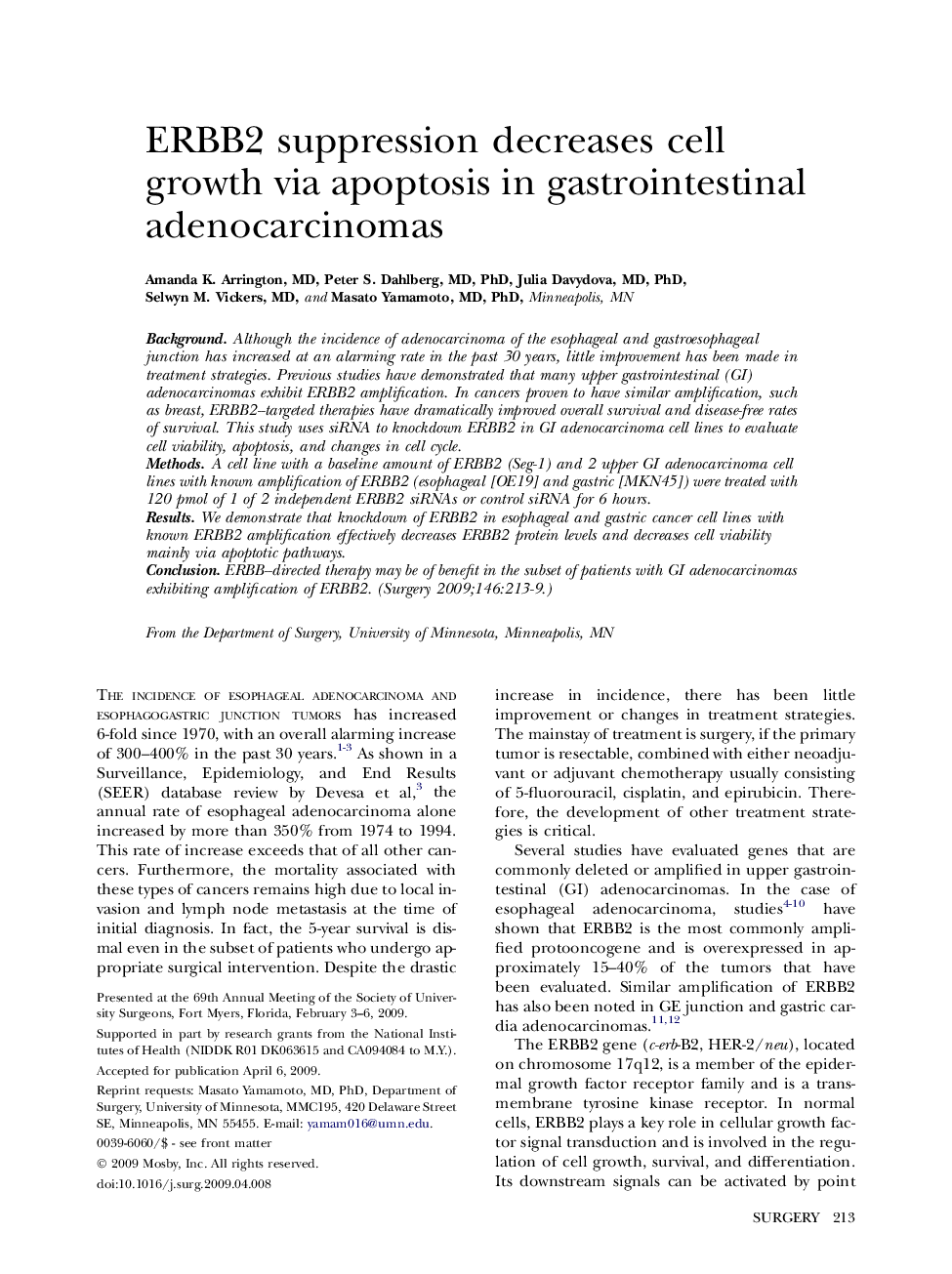| Article ID | Journal | Published Year | Pages | File Type |
|---|---|---|---|---|
| 4309384 | Surgery | 2009 | 7 Pages |
BackgroundAlthough the incidence of adenocarcinoma of the esophageal and gastroesophageal junction has increased at an alarming rate in the past 30 years, little improvement has been made in treatment strategies. Previous studies have demonstrated that many upper gastrointestinal (GI) adenocarcinomas exhibit ERBB2 amplification. In cancers proven to have similar amplification, such as breast, ERBB2–targeted therapies have dramatically improved overall survival and disease-free rates of survival. This study uses siRNA to knockdown ERBB2 in GI adenocarcinoma cell lines to evaluate cell viability, apoptosis, and changes in cell cycle.MethodsA cell line with a baseline amount of ERBB2 (Seg-1) and 2 upper GI adenocarcinoma cell lines with known amplification of ERBB2 (esophageal [OE19] and gastric [MKN45]) were treated with 120 pmol of 1 of 2 independent ERBB2 siRNAs or control siRNA for 6 hours.ResultsWe demonstrate that knockdown of ERBB2 in esophageal and gastric cancer cell lines with known ERBB2 amplification effectively decreases ERBB2 protein levels and decreases cell viability mainly via apoptotic pathways.ConclusionERBB–directed therapy may be of benefit in the subset of patients with GI adenocarcinomas exhibiting amplification of ERBB2.
